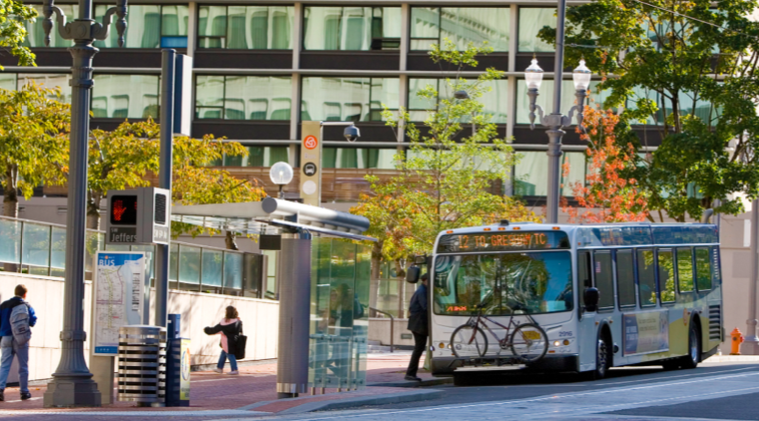Will a new development "bring traffic"?
That's a weighty question for cities around the country facing public pressure about development proposals. In response many cities have established "mitigation" rules, that require the developers to, for example, add parking, or widen roads to "relieve" future traffic, before they can construct an apartment or office building, for example.
But these "mitigation" efforts rely on pseudoscientific, and disproven assumptions, according to a new report from Smart Growth America. Unfortunately, they have been codified, widely adopted and are rarely questioned. Worse, many common mitigation techniques encourage car use and make walking and other alternatives to driving less attractive, actually increasing traffic.
For example, the presence of a free parking space is a strong incentive for driving to work. Studies have found that New Yorkers who are provided a free parking space are 45 percent more likely to drive into traffic-choked Manhattan for work. Another study in New Jersey found that the availability of a parking space was a better predictor of whether residents of transit-oriented developments would drive to work than access to transit.
But there's a better way. Smart Growth America, with the Mayors' Innovation Project and the State Smart Transportation Initiative, suggest a bold new framework for traffic mitigating called "Transportation Demand Management."
It's already used in progressive cities such as Arlington, Va., and Palo Alto, Calif. to reduce traffic from new developments or to help employers find sustainable alternatives.
Here are the highlights:
Paid parking policy
Parking itself could be a mitigation strategy, as long as it's priced in a way that helps discourage driving. Developers that "unbundle" parking from the price of rent, for example, help change the incentives so they don't provide a hidden subsidy for driving and car ownership. (As a bonus, this reform also promotes housing affordability.) Any office developments that charge employees for parking, by the month, week, or better yet, the day should also receive credit. Better yet, charge everyone who uses parking at the development by the hour, says SGA.
Make developers pay for walking, or biking infrastructure
Many cities — hi, Los Angeles! — require developers to pay for road widenings — another rule that can induce driving trips and make the area more unpleasant for walking or biking. Impact fees like this also discourage the kind of compact urban development that allows people to reduce their reliance on driving more broadly, by incentivizing Greenfield sprawling development instead.
If cities want to impose impact fees on developers, SGA says, a better strategy is to make them pay for biking and walking infrastructure. Nashville, for example, requires developers to pay for sidewalk infrastructure — if not on site, then via an "in-lieu" fee, that can be used to complete sidewalk infrastructure nearby. SGA recommends tying in the in-lieu fees to infrastructure nearby, say within a quarter mile of small projects or within a mile of very large projects.
Add affordable housing
Including affordable housing in a development could also count as a traffic mitigating measure, since lower-income people are much less likely to drive than higher-income.
Add bike infrastructure
Developers who include bike parking or offer residents bike share memberships, or better yet, finance a bike share kiosk, could receive credit toward mitigating traffic.
Support transit
Same goes for transit. Developers that want to build in walkable areas can help calm fears about gridlock and park-a-geddon by providing residents with free transit passes, or they can chip in to help support a transit line, or operate a shuttle service that ferries residents or employees to the closest rail station. All of these interventions can lessen the need for residents to own and drive cars.
Mix land uses
Finally, developers that offer a mix of retail, housing and office, or some combination of the tree, reduce the need for driving. Those types of development should receive credit toward traffic mitigation, SGA says. Extra special credit can be given for developers providing child care on site, which can be especially effective in reducing driving trips.





